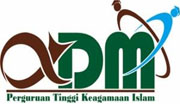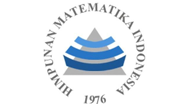Optimization on the Budgeting Allocation with Goal Programming in Departmen Mathematic Education Universitas HKBP Nommensen
Abstract
The purpose of this research is to maximize the use of funds at the Universitas HKBP Nommensen Faculty of Training and Educational Sciences, a higher education establishment. This study intends to educate the general public on the use of goal programming challenges in achieving organizational goals, both financially and non-financially. Between 2020 and 2022, information on this faculty's budget estimates was gathered from the faculty budget. Five objectives were taken into consideration for the study in the following order of priority: personal costs, overhead costs, capital expenditures, revenue (internally generated), and the total budget from the university's budget estimates. The information gathered was utilized to create a goal programming problem, which was then addressed using the Simplex approach (using LINGO software). The optimum value of Z (Z=4.24) was found to achieve goal 1 (the personal cost goal), goal 3 (the capital expenditure goal), and goal 5 (the overall budget goal) based on the solution provided. However, it failed to satisfy goals 2 and 4, which are the goals for overhead costs and revenue, respectively. Based on the results, it was determined that in order to meet targets 2 and 4, which are related to overhead costs and revenue, respectively, the Department Mathematic Education Universitas HKBP Nommensen, needed to come within 4.24 billion Rupiah. It was also suggested that the University have an annual budget review with a minimum of 4.24 billion Rupiah in 2010 and that this review be done in a timely and appropriate manner, under the supervision of an active government budget monitoring team.
Keywords
Full Text:
PDFReferences
Aouni, B. and Kettani, O “Goal Programming Model: A glorious history and promising future”. European Journal Of Operations Research 133(2), 1 – 7. 2001.
Dan Dan, Ekezei & Desmond. O., Onouha. “Goal Programming: An Application to Budgetary Allocation of An Institution of Higher Learning”. Research Journal in Engineering and Applied Sciences Vol 2. Pp. 95 – 105. 2013.
Ignizio, J. P “Goal Programming and Extensions”. Lexington books. Lexington. MA. 1976
Kwak, N. K., Schnierderjams, M. J. and Warkenstin, K. S. “An application of linear goal programming to the Marketing distribution”. European Journal of Operations Research,Vol.52, pp. 334 – 344. 1991
Lam W S, Lam W H. “Strategic decision making in portfolio management with goal programming model”. American Journal of Operations Management and Information Systems, Vol 1. pp. 34-38. 2016
Moradi M, Janatifar H. “Ranking of financial strategies based on linear goal programming and vikor”. International Journal of Business Management and Economics, Vol. 1(1) Pp.16-23. 2014.
Mulyono. “Manajemen Administrasi dan Organisasi Pendidikan”. Jogjakarta: Ar Ruzz. 2010.
Peraturan Pemerintah Republik Indonesia Nomor 23 Tahun 2005 Tentang Pengelolaan Keuangan Badan Layanan Umum.
Sihombing DI, Sitompul OS, Sutarman dan Nababan E. “A Chance Constrained Approach on Goal Programming Model to Evaluate Transportation Planning”. Journal of Computational and Theoretical Nanoscience Vol. 17, 1–7.2020
Sutrisno. “Manajemen Keuangan: Teori, Konsep dan Aplikasi”. Yogyakarta: Ekonisia. Media. 2013
DOI: http://dx.doi.org/10.30829/zero.v7i2.19218
Refbacks
- There are currently no refbacks.

This work is licensed under a Creative Commons Attribution-ShareAlike 4.0 International License.
Publisher : Department of Mathematics Faculty of Science and Technology Universitas Islam Negeri Sumatera Utara Medan | |
✉️ Email: zero_journal@uinsu.ac.id 📱 WhatsApp:085270009767 (Admin Official) | |
 |  |  |  |  |



